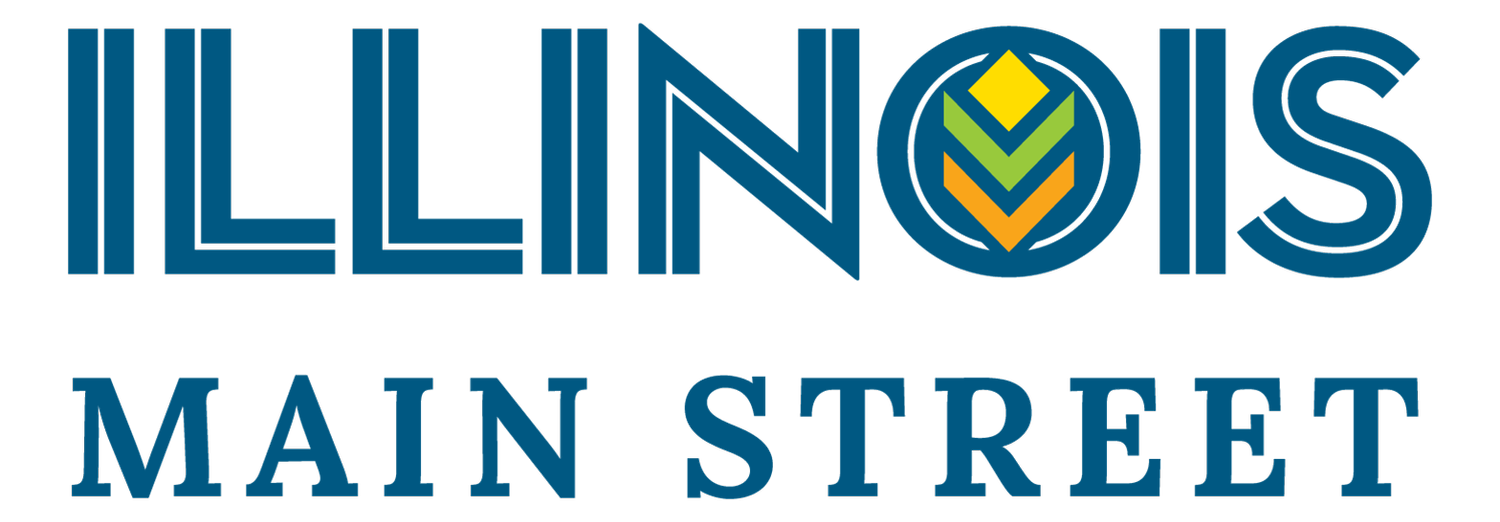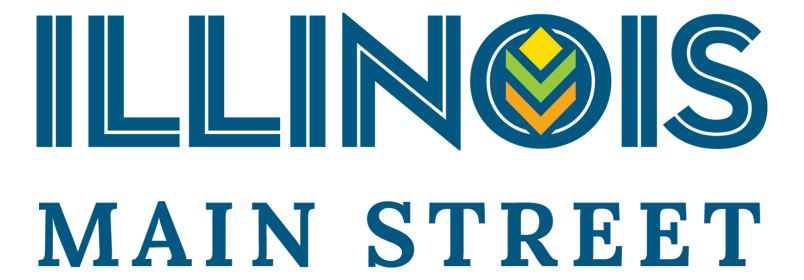
The Main Street Approach
A Roadmap to Revitalization
Illinois Main Street communities use the Main Street Approach™ to guide their revitalization efforts. The Main Street Approach™ is a comprehensive framework that helps communities identify their assets and competitive advantage, and build from those strengths. This approach helps communities get started with revitalization, and grows with them over time.
The Approach at a Glance
The Main Street Approach™ is centered around Transformation Strategies. A Transformation Strategy articulates a focused, deliberate path to revitalizing or strengthening a downtown or commercial district’s economy.
A program’s work on Transformation Strategies should be organized around the Four Points: Economic Vitality, Design, Promotion, and Organization.
A revitalization program’s work – and its Transformation Strategies – need to be informed by a solid understanding of local and regional market data, and sustained and inclusive community engagement.
Main Street America
Main Street America is a program of the National Main Street Center, Inc., a subsidiary of the National Trust for Historic Preservation. To help communities achieve their economic goals, Main Street America has developed a comprehensive revitalization strategy that pairs thoughtful preservation of historic assets with sensible business practices.
While the Main Street Four-Point Approach™ provides the format for successful revitalization, implementation of the four-point approach is based on eight guiding principles that pertain to all areas of the revitalization effort.
Guiding Principles
Comprehensive. Downtown revitalization is a complex process and cannot be accomplished through a single project. For successful long-term revitalization, a comprehensive approach must be used.
Incremental. Small projects and simple activities lead to a more sophisticated understanding of the revitalization process and help to develop skills so that more complex problems can be addressed, and more ambitious projects undertaken.
Community Driven. Local leaders must have the desire and the will to make the project successful. The National Main Street Center and the state Main Street program provide direction, ideas, and training, but continued and long-term success depends upon the involvement and commitment of the community.
Public-Private Partnership. Both the public and private sectors have a vital interest in the economic health and physical viability of the downtown. Each sector has a role to play, and each must understand the other’s strengths and limitations so that an effective partnership can be forged.
Identifying and Capitalizing on Existing Assets. Business districts must capitalize on the assets that make them unique. Every district has unique qualities – like distinctive buildings and human scale that give people a sense of belonging. These local assets must serve as the foundation for all aspects of the revitalization process.
Quality. Quality must be emphasized in every aspect of the revitalization program. This applies equally to each element of the program, from storefront design to promotional campaigns and to educational programs.
Change. Changes in attitude and practice are necessary to improve current economic conditions. Public support for change will build as the program grows.
Implementation-Oriented. Activity creates confidence in the program and ever-greater levels of participation. Frequent, visible changes are a reminder that the revitalization effort is under way. Small projects at the beginning of the program pave the way for larger activities as the revitalization effort matures.
What Are Transformation Strategies?
Transformation Strategies – generated through meaningful community engagement and informed by an analysis of the district’s market position — help to guide a revitalization program’s work. An effective Transformation Strategy serves a particular customer segment, responds to an underserved market demand, or creates a differentiated destination.
Some "ready-to-use" strategies — called Catalyst Strategies — fall into two broad categories: those that are focused on a specific customer segment and those that are focused on an industry, product, or service segment.
Examples include:
Workers and Residents
Elder Friendly and Aging-in-Place
Family-Friendly
Agriculture Center
Arts (performing and visual)
College Town
Convenience Goods & Services
Entertainment & Nightlife
Knowledge Economy
What Are the Four Points?
Transformation Strategies are implemented through comprehensive work in four broad areas, known as the Four Points.
Economic Vitality focuses on capital, incentives, and other economic and financial tools to assist new and existing businesses, catalyze property development, and create a supportive environment for entrepreneurs and innovators that drive local economies.
Design supports a community’s transformation by enhancing the physical and visual assets that set the commercial district apart.
Promotion positions the downtown or commercial district as the center of the community and hub of economic activity, while creating a positive image that showcases a community’s unique characteristics.
Organization involves creating a strong foundation for a sustainable revitalization effort, including cultivating partnerships, community involvement, and resources for the district.



